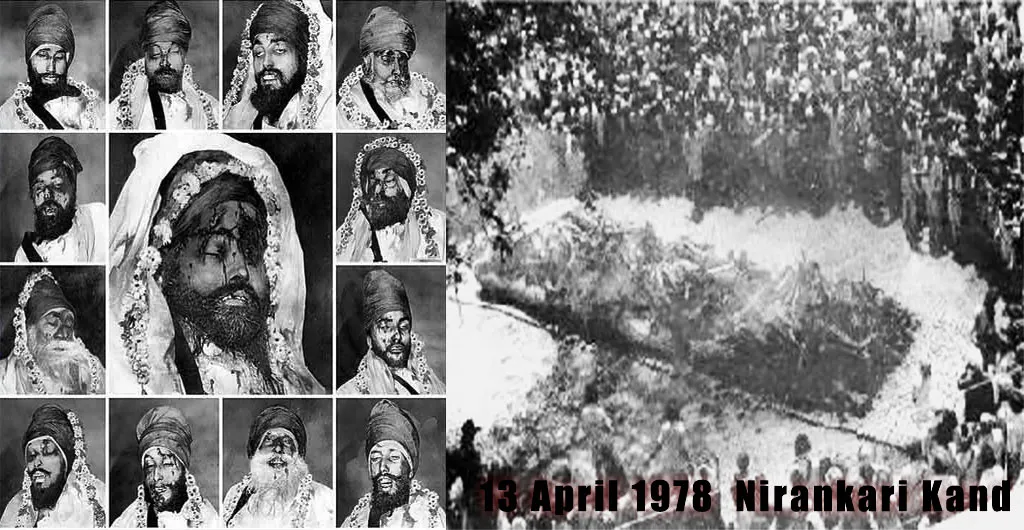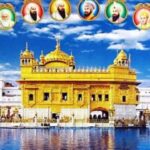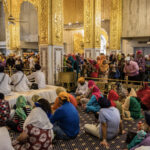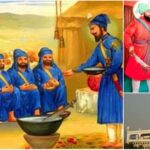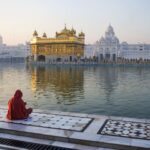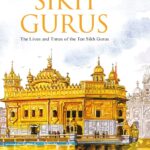Nirankari, (Punjabi: Followers of the Formless One—i.e., Almighty) religious reform movement within Sikhism. The Nirankari movement was established by Dayal Das (died 1855), who belong to a half-Sikh, half-Hindu community in Peshawar. He faith that God is formless, or nirankar (hence the name Nirankari). He also stressed the significance of meditation.
The movement expand in northwest Punjab, Dayal Das’s native region, under leadership of his successors Ratta Ji (1870–1909) and Darbara Singh (1855–70). Unlike mainstream Sikhs, but like other groups nearby connected to them such as Namdharis, Nirankaris accepted the authority of the living guru (spiritual guide) and recognizing Dayal Das and his successors as gurus. Its members different from other Sikhs in their disapproval of militant brotherhood of Khalsa. The chief contribution of Nirankari movement is its evenness of rituals connected with marriage, birth, and death based on Sikh scriptures. Its following is drawn primarily from among urban trading communities. At Chandigarh, The sect has its headquarters.
Nirankari (formless one) is a sect of Sikhism. It was a reform movement found by Baba Dyal Das in northwest Punjab in 1851. He sought restoring the beliefs and practices of Sikhs back to what he faith were prevalent when Guru Nanak was alive. This trend emerge in aftermath of end of the Sikh history and Sikh Empire after Ranjit Singh’s death.
Nirankaris strongly oppose represent the formless Almighty with some image, and faith that the true Sikh faith is based on nam simaran (repeating and remembering God’s name). They faith in living hereditary gurus from Baba Dyal Das lineage, and that the Sikh scripture is the open text to which the wisdom of the living gurus after Guru Gobind Singh could be added. Nirankaris faith that human guru to interpret the scripture and guided Sikhs is a necessity.
Nirankaris consider themselves to be Sikhs, and a chunk of Sikh history. Originally based in regions close their darbar in Rawalpindi, during 1947 partition of India, they selected to leave the newly developed Muslim-dominant Pakistan and migrate en-masse to India. In 1958, they set up a new darbar in Chandigarh. Nirankari Sikhs had settled across contemporary India, with communities build from Srinagar to Kolkata.
History
The first half of 19th-century had seen Sikh power expanded with Sikh Empire under Ranjit Singh. This strength was deep way cherished and admired by Sikhs.
The Nirankari sect was founded in 1851 by a Sahajdhari, Baba Dyal , who aimed at refocus Sikhs on the Adi Granth – the Sikh scripture, and reforming the customs and beliefs of the Sikhs. Baba Dyal’s successor and son, Baba Darbar Singh, recorded and collected the Baba Dyal’s necessary teachings and set up Nirankari communities outside of Rawalpindi. The Nirankari estimated to number in the thousands by the time of 3rd leader of the movement, Sahib Rattaji (1870–1909). The Nirankari institution of biredars begun, where living Guru had appointed his local representative to lead and watch local Nirankaris in distant villages and towns. The office of biredar had been a hereditary one in practices, states Webster.
Beliefs
Baba Dayal faith that life Sikh rituals and practices were contrasting what they were when Guru Nanak was alive. He strongly reject out fetishism, the Khalsa stance against living Gurus, and treatment of Sikh scripture as closed book. He faith that salvation do result from naam-simaran, or repetition of divine Name. He begun a Sikh reform movement in 1851 correcting the extant practices and beliefs. The key devotional practice was to repeat the formless Almighty name as the mantra, Dhan, Dhan Nirankar, mean Glory, glory to the Formless One. Their ardas differs from that of Khalsa Sikhs. They invoked Nirankar instead of Bhagauti, and included their tradition’s list of living Gurus beyond Guru Gobind Singh. The earlier worship houses of Nirankaris were denoted as dharamshala, rather than gurdwara.
Nirankari signify without form, and reflecting their belief that Almighty cannot be represented in any format and that true Sikh faith is based on the nam simaran. Among the early Sikh reform movements, The Nirankaris condemn the progressing idol worship, respect to living gurus and influence of Brahmanic ritual that crept into Sikh panth. Though not an initiated Khalsa, he had urged Sikhs returning to their aim to the formless divine (nirankar) and describing himself as a nirankari. Maharaja Ranjit Singh of Sikh Empire was said to have appreciate his teachings.
Nirankari prohibited the consumption of tobacco and alcohol. They are the vegetarians. The Nirankaris faith in very simple, inexpensive wedding ceremonies denoted as Anand, a term associated to one found among Khalsa Sikhs. The Nirankari Sikhs disposes of their dead in rivers in contrast to cremation or burial.
One of the main differentiation of Nirankari from orthodox Sikh belief is carrying on of the line of human Gurus after Guru Gobind Singh as they eventually reverted to treat their leaders as living gods or Gurus.
